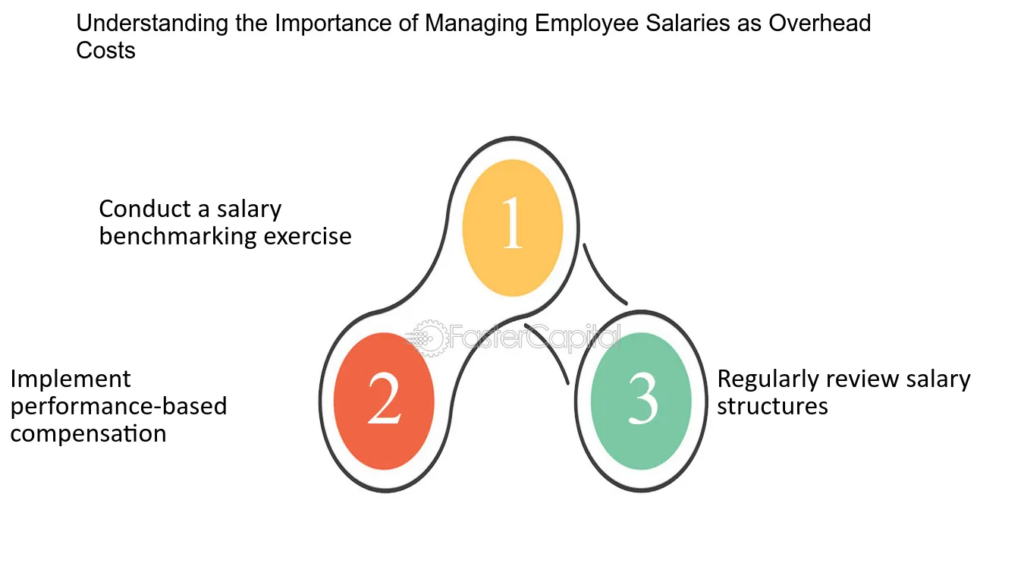In today’s dynamic job market, organizations across industries are constantly seeking ways to attract and retain top talent. A crucial aspect of this talent management strategy is salary benchmarking. Salary benchmarking is the process of comparing an organization’s salary offerings with external market data to ensure competitiveness and fairness. It enables organizations to make informed decisions related to compensation, employee retention, and recruitment strategies.
In this guide, we will delve into the importance of salary benchmarking, the benefits it brings to organizations, how to choose the right benchmarking tool, gather accurate data, analyze and interpret salary data, identify market trends and industry standards, address challenges, ensuring data security, and leveraging salary benchmarking to drive employee retention and engagement and inform talent acquisition strategies.
Understanding the Importance of Salary Benchmarking
Salary benchmarking is a critical practice that empowers organizations to stay competitive in attracting and retaining top talent. By understanding how their salaries stack up against industry standards and market trends, organizations can make better decisions regarding compensation packages, promotions, and bonuses. This enables them to attract skilled professionals, retain employees, and maintain a favorable reputation in the job market.

Source: faster capital
Key Benefits of Implementing a Salary Benchmarking Strategy
Implementing a robust salary benchmarking strategy offers several key benefits to organizations:
- Attracting and Retaining Top Talent: Salary benchmarking ensures that the compensation packages offered by an organization are competitive, which helps attract highly qualified candidates and retain valuable employees.
- Maintaining Internal Equity: By comparing internal salaries with external market data, organizations can ensure fairness and avoid pay disparities within their workforce, fostering a positive work environment.
- Optimizing Compensation Budgets: Salary benchmarking helps organizations allocate compensation budgets effectively by providing insights into salary ranges for different positions, experience levels, and geographic regions.
- Enhancing Employee Engagement: When employees perceive their salaries to be fair and competitive, it boosts their morale, job satisfaction, and overall engagement within the organization.
- Gaining a Competitive Edge: Knowing the market rates for salaries allows organizations to position themselves competitively within their industry and attract high-potential candidates.
Choosing the Right Salary Benchmarking Tool for Your Organization
Selecting the right salary benchmarking tool is crucial for obtaining accurate and reliable data. Here are some factors to consider when choosing a benchmarking tool for your organization:
- Data Quality: Ensure the benchmarking tool grants access to thorough, current, and dependable salary data sourced from a variety of outlets.
- Industry Relevance: Seek a tool specialized in your industry or one with extensive industry coverage to guarantee alignment with your organization’s specific requirements.
- Geographic Coverage: Consider a tool that provides salary data for the geographic regions relevant to your organization, as salaries can vary greatly across different locations.
- Customization Options: Look for a tool that allows you to filter data by job title, experience level, industry, and other relevant variables to obtain accurate benchmarking insights.
- User-Friendly Interface: Opt for a tool that is easy to navigate and provides intuitive visualizations to simplify data analysis and interpretation.
Gathering Accurate and Reliable Salary Data
To conduct effective salary benchmarking, organizations must gather accurate and reliable salary data. Here are some methods for collecting salary data:
- Online Salary Resources: Leverage online platforms and databases that consolidate salary information from diverse sources, offering a comprehensive snapshot of industry-specific salary ranges.
- Industry Surveys: Engage in surveys tailored to your industry, conducted by reputable organizations, to acquire salary data directly from peers and competitors within the industry.
- Professional Networks: Engage with professional networks and associations to gather insights and industry-specific salary information from experienced professionals in your field.
- Job Advertisements: Analyze job advertisements in your industry to gain insights into the salary offerings by competitors for similar positions.
- Third-Party Consultants: Collaborate with specialized salary benchmarking consultants who have access to a wide range of industry-specific data and expertise in conducting accurate benchmarking.
Analyzing and Interpreting Salary Data for Effective Benchmarking
Once the salary data is gathered, organizations must analyze and interpret it to draw meaningful insights. Here are some steps for analyzing and interpreting salary data for effective benchmarking:
- Normalize the Data: Adjust the salary data for factors such as location, job title, experience level, and industry to ensure fair comparisons.
- Identify Salary Ranges: Determine the salary ranges for different positions, taking into account factors such as experience, education, and geographic location.
- Compare Internal Salaries: Compare the salaries within your organization with the industry benchmarks to identify any gaps or discrepancies and take appropriate actions.
- Identify Hot Skills: Identify the skills that command higher salaries in the market to ensure competitive compensation for employees possessing these skills.
- Perform Trend Analysis: Analyze salary trends over time to identify any changes in industry standards and market rates, enabling organizations to stay up-to-date and adjust their compensation strategies accordingly.
Identifying Market Trends and Industry Standard in Salary Benchmarking
Effective salary benchmarking requires organizations to identify market trends and industry standards to stay competitive. Here are some strategies for identifying market trends and industry standards:
- Stay Informed: Keep track of industry publications, news, and reports on salary trends and industry standards to align your compensation strategies with current market rates.
- Networking: Engage with peers, industry professionals, and professional networks to stay updated on industry-specific salary trends and practices.
- Attend Conferences and Events: Participate in conferences, seminars, and events related to your industry to gain insights into industry best practices and upcoming trends in compensation.
- Leverage Salary Surveys: Utilize salary surveys and reports published by reputable organizations to benchmark your organization’s compensation practices against industry benchmarks.
- Monitor Job Boards: Monitor job boards and advertisements to understand the salary offerings made by competitors for similar positions.
Addressing Challenges in Salary Benchmarking
Salary benchmarking can present several challenges that organizations must address to ensure accurate and effective results. Some common challenges include:
- Data Quality: Ensuring that the data used for benchmarking is accurate, reliable, and up-to-date is crucial for obtaining meaningful insights.
- Data Privacy: Organizations must ensure that the salary data used for benchmarking is anonymized and that the privacy of individuals contributing to the data is protected.
- Sample Size: A limited sample size can lead to skewed results. Organizations should aim for a reasonable sample size to ensure representative benchmarking.
- Job Matching: Matching job titles across organizations accurately can be challenging. Organizations must take into account job responsibilities, qualifications, and experience levels when comparing salaries.
- Changing Job Roles: With the evolving job market, new job roles and titles emerge. Organizations must adapt their benchmarking strategies to accommodate these changes to stay relevant.
Best Practices for Ensuring Data Security in Salary Benchmarking
Data security is of paramount importance when conducting salary benchmarking. Implementing the following best practices can help organizations protect sensitive data and maintain data security:
- Anonymize Data: Ensure that any data used for benchmarking is anonymized, removing any identifiable information to protect the privacy of individuals.
- Secure Data Storage: Store salary data securely using encryption and access controls to prevent unauthorized access or data breaches.
- Vendor Selection: When working with benchmarking tool providers or consultants, choose reputable vendors who have strong data security measures in place.
- Employee Training: Educate employees on data security best practices to ensure they understand the importance of protecting sensitive information during the benchmarking process.
- Data Retention Policies: Establish clear data retention policies to ensure that salary data is retained for the necessary period and securely disposed of when no longer needed.
Using Salary Benchmarking to Drive Employee Retention and Engagement
Salary benchmarking can play a vital role in driving employee retention and engagement. Here’s how organizations can leverage benchmarking insights:
- Competitive Compensation: Use benchmarking insights to ensure that compensation packages are competitive, enabling organizations to attract and retain top talent.
- Identify Pay Discrepancies: Benchmarking can help identify pay discrepancies within the organization, allowing organizations to rectify any gaps and ensure fairness.
- Performance-Based Rewards: Utilize benchmarking data to develop performance-based reward systems that align employee efforts with market standards.
- Salary Reviews: Regularly review and update salaries based on benchmarking data to ensure they remain competitive and reflective of industry standards.
- Employee Communication: Transparently communicate with employees about the organization’s salary benchmarking practices, emphasizing fair compensation policies and industry alignment.
Leveraging Salary Benchmarking to Inform Talent Acquisition Strategies
Salary benchmarking can also inform talent acquisition strategies, ensuring organizations attract the right candidates. Here’s how it can be leveraged:
- Financial Planning: Use benchmarking data to estimate the cost of hiring new talent and plan finances accordingly, considering competitive compensation packages.
- Setting Attractive Offers: Benchmarking insights can help organizations set attractive salary offers that align with industry standards, increasing the chances of attracting top candidates.
- Negotiations: Use benchmarking data to guide negotiations during the hiring process, ensuring offers are competitive and reflective of market rates.
- Forecasting Future Hiring Needs: Analyzing salary trends and industry standards can provide insights into future hiring needs, allowing organizations to plan strategically and attract talent accordingly.
- Balancing Compensation and Talent: Salary benchmarking helps organizations strike a balance between attracting top talent and setting a compensation budget that aligns with industry norms.
In conclusion, salary benchmarking is a powerful tool that helps organizations make informed decisions about compensation, talent retention, and recruitment strategies. By choosing the right benchmarking tool, gathering accurate and reliable data, analyzing and interpreting the data effectively, and leveraging market trends and industry standards, organizations can stay competitive and drive employee engagement and retention. Additionally, addressing challenges and ensuring data security are crucial to obtaining meaningful benchmarking insights. By adopting best practices, organizations can confidently navigate the world of salary benchmarking and unlock the benefits it brings to their talent management strategies.




